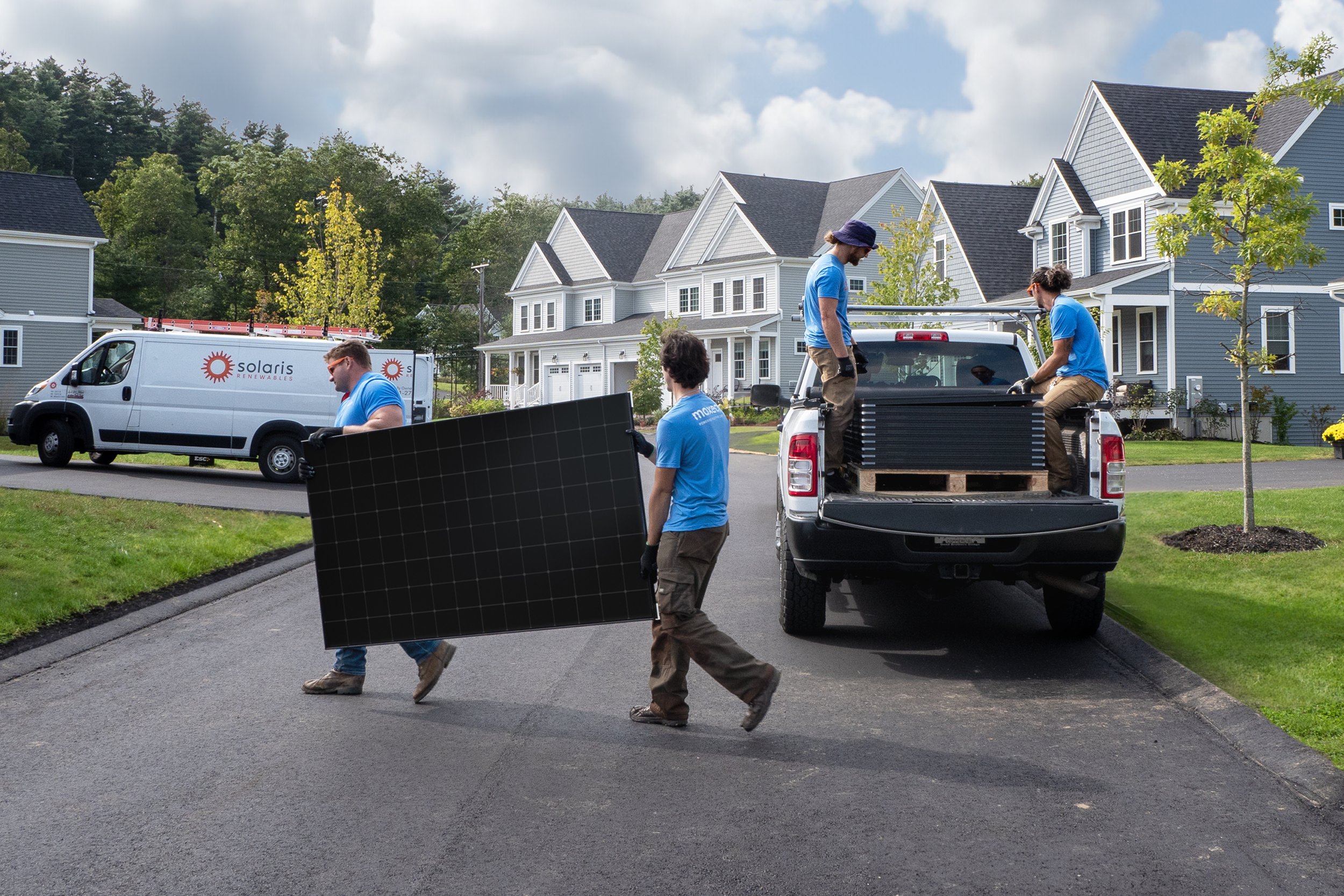
Maxeon Solar -
Different and better than conventional solar
For 40 years, Maxeon has been the global leader in solar innovation, developing leading-edge technology to deliver the best solar energy products and the best customer experience.
Following our spin-off from SunPower Corporation in 2020, we took on a new name but kept the same mission: to build the best performing, most reliable, sustainably-made solar panels in the world. Maxeon goes the extra mile to protect your investment knowing that each Maxeon solar panel is manufactured to deliver more energy and more savings, more reliably. For peace of mind you can count on.

-

Say yes to better solar.
From efficiency to reliability and design, there is no better choice in solar panels than Maxeon.
-

A safer way to invest.
Our solar technology is designed to last. That's why our flagship Maxeon solar panels have the longest warranty in solar: 40 years.
-

Solar with a purpose
Maxeon is the most sustainable choice in solar. Maxeon is synonymous with the highest levels of responsible and sustainable operations.


Grow your solar business with Maxeon.
Join the partner network that supports your installation business every step of the way.
The Maxeon Blog
The solar energy market is in the midst of uncertainty, but Maxeon stands firm as a leading provider and innovator that is positioned to be your solar partner of choice for the long term.
The global trend toward clean, renewable energy is undeniable - with more individuals, businesses, and organizations realizing the cost savings as well as the ability to address climate change. Demand for solar power has seen a resulting surge.
As low-cost solar manufacturers continue to scale, and new, inexperienced market entrants proliferate—it’s important to understand the impact declining prices may have on the quality and reliability of their solar panels.
When it comes to solar, we’ve seen an increase in media reports profiling the impact of damaging hailstorms on solar installations around the world.
The good news is that Maxeon panels are uniquely engineered to stand up to the increasing severity of weather events brought on by climate change.
Maxeon supports the Lifeline Albury Wodonga charity with solar panel donations, part of the Maxeon Gives initiative.
Maxeon is driving the shift toward a circular solar economy by creating durable, high-efficiency, and recyclable panels that minimize waste and enhance sustainability.
Together with our installation partners, we are committed to providing long-term, comprehensive solutions for economic and environmental success for medical businesses through the smart use of solar power.
In solar, speed must not compromise quality—Maxeon prioritizes reliability, offering a 40-year warranty backed by decades of testing and real-world performance data.
Out of all the phones that I personally have owned, my favorite was the one that has lasted me the longest. I’m willing to bet that solar customers will think of their panels the same way.
Maxeon Lights Up Barrancas del Cobre Adventure Park with Solar Energy, Promoting Environmentally Responsible Tourism.
At Maxeon, we put a huge amount of work and investment into ensuring our products and supply chains are as clean as the energy they produce.
SolarStratos: Setting New Limits as the First Manned Solar Plane to Reach the Stratosphere
When I became Executive Sponsor of the ESG program at Maxeon, my vision was for the Company to be an industry leader in sustainability. This was an audacious goal to set, but an important one given Maxeon’s mission of Powering Positive Change.
At Maxeon, we are focused on doing our part by training and developing the careers of women at our locations around the world and we recognize how our female employees’ achievements are critical to the success of our company.
The building and energy sectors have the most potential for significantly reducing greenhouse gas emissions and tackling climate change. More so, they have a responsibility to act given that, globally, CO2 emissions from the building sector are the highest ever recorded.
For the 248 local families in the Kan Byin community, the solar mini-grid now lights up their homes for their children to study, has improved refrigeration to keep food and medicine fresh, and has lowered their energy costs.
The EU's solar growth is surging, with rooftop panels poised to supply 25% of electricity, while Maxeon advances sustainability and decarbonization worldwide.
Our purpose of Powering Positive Change governs our approach to sustainability and our industry-first green credentials for our panels and LEED-certified facilities are a testament to our commitment.
Going solar reduces carbon emissions and boosts energy independence, but not all solar technologies have the same environmental impact.
Choosing to go solar is one of the most environmentally responsible decisions you can make. New study shows Maxeon panels outperform other technologies on energy payback time.
Solar panels are relatively low maintenance but as with any product problems can occur. So, to make you aware, we’ve put together this useful guide for you that shows you common problems with solar panels and how to avoid them.
Maxeon technology is supporting the shift to real green mobility by empowering EV users to shift from carbon-based electricity sources to 100 per cent renewable energy, ultimately helping to compensate for the carbon emissions generated when cars are made.
The transition toward clean energy sources is pivotal in mitigating impacts of climate change, and major components of that transition include solar panels. Therefore, the demand for solar energy to power homes, businesses, and public spaces is growing.
Solar panels need to power through all weather conditions and maintain efficiency and reliability during their subsequent decades of operation, which is why panel testing must include parameters beyond temperature alone.



























